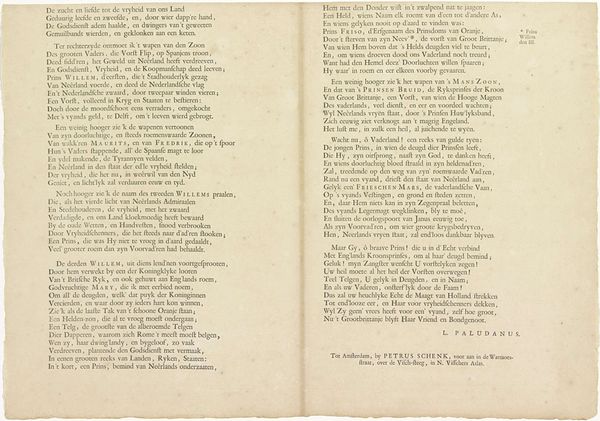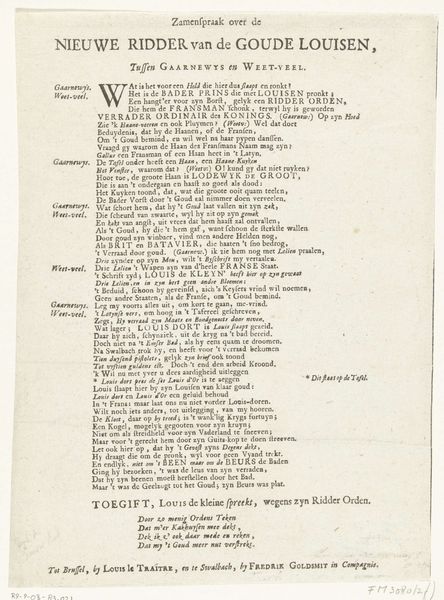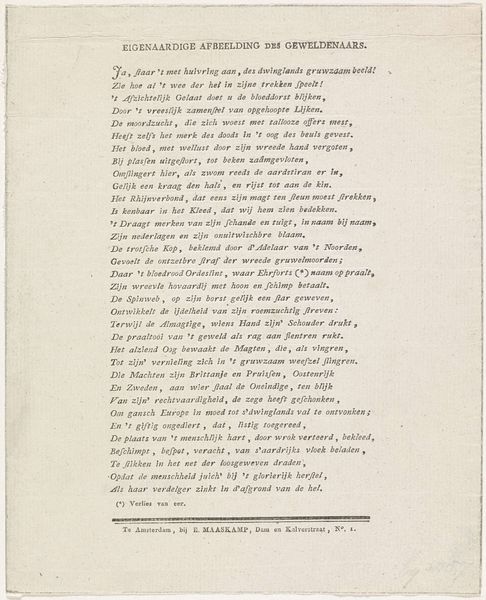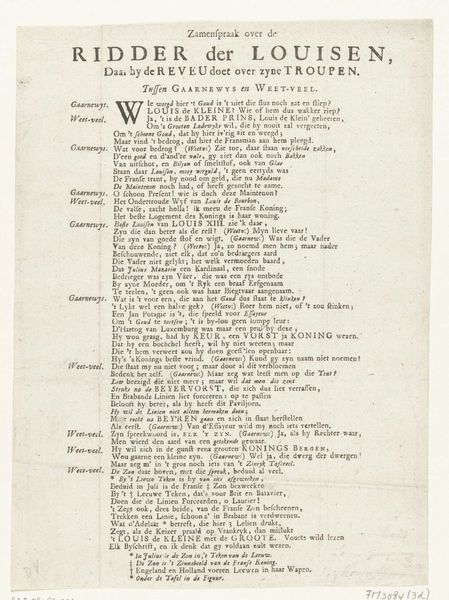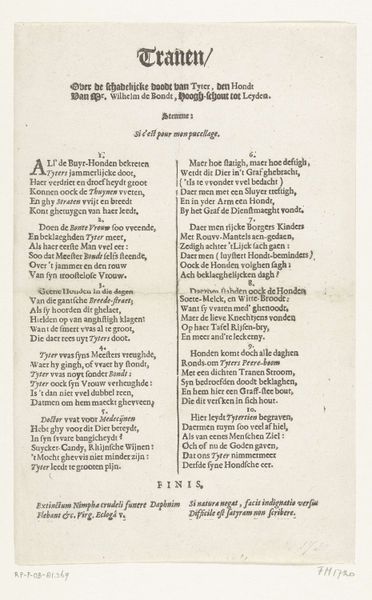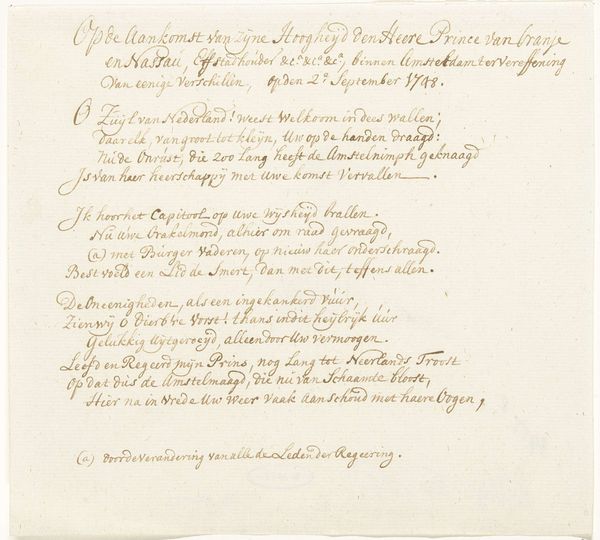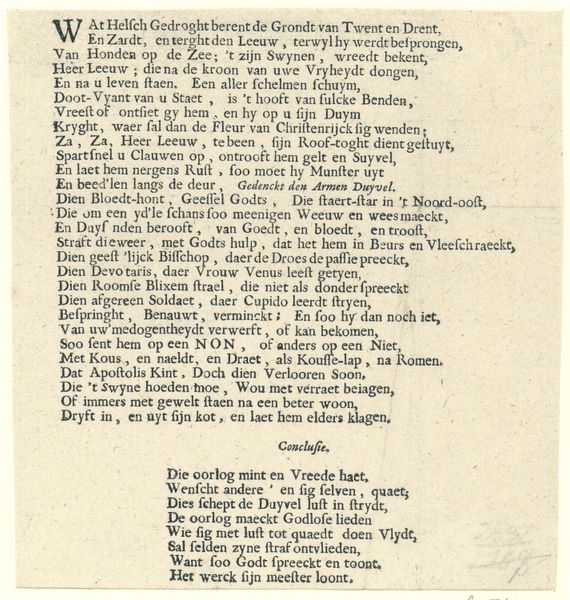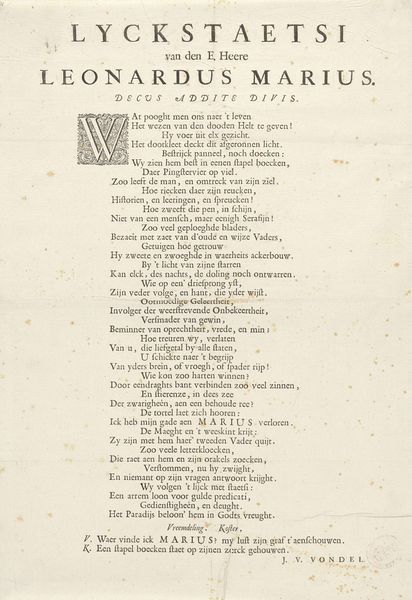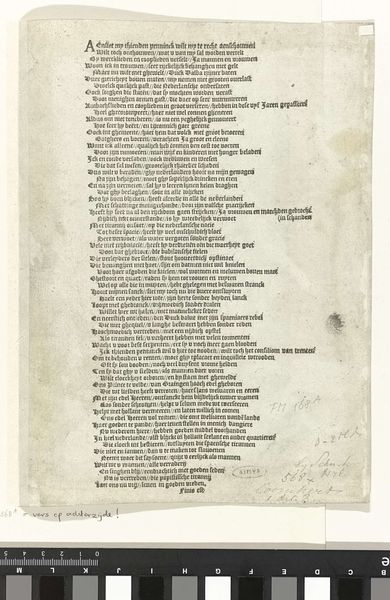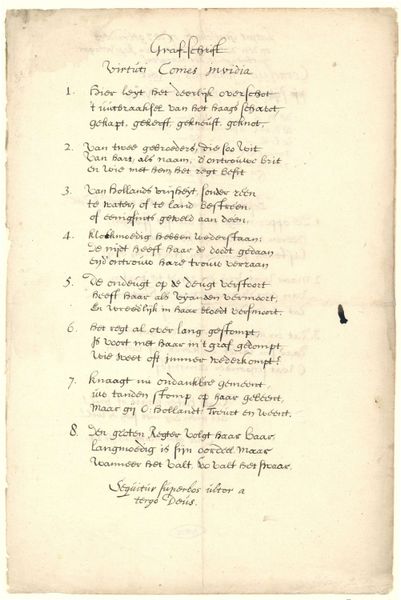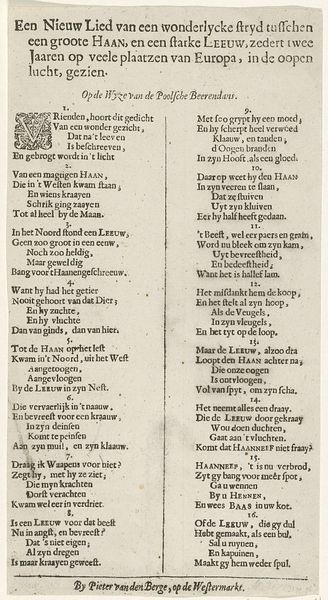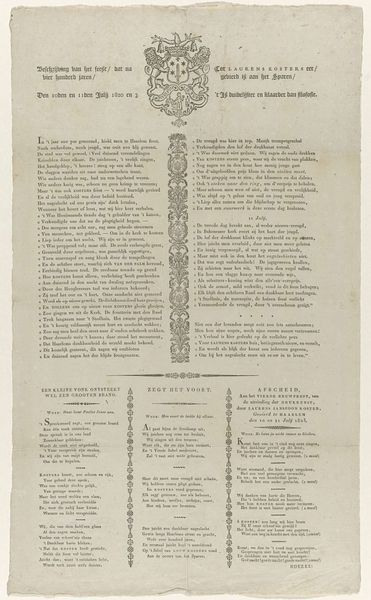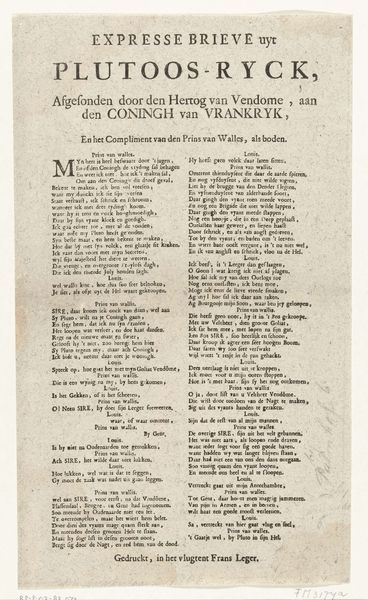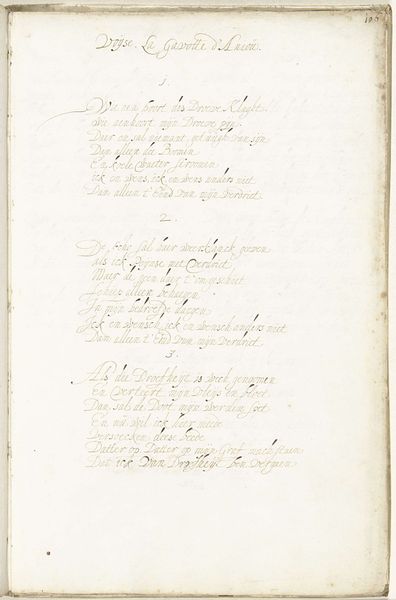
graphic-art, print
#
graphic-art
# print
Dimensions: height 307 mm, width 175 mm
Copyright: Rijks Museum: Open Domain
Editor: This print, titled "Vers op de dood van de gebroeders De Witt, 1672," so, a verse on the death of the De Witt brothers, created anonymously, it’s held at the Rijksmuseum. Its graphic simplicity belies the strong emotions it must have carried at the time. What kind of impact would this have had back in 1672? Curator: Indeed, its starkness speaks volumes. This print must be understood within the socio-political context of the Dutch Republic in 1672, the "Rampjaar," or Disaster Year. The De Witt brothers, powerful statesmen, were brutally murdered amidst political turmoil. This print is a reflection of the intense emotions, division, and anxieties of the time. It also hints at how images were deployed in shaping public opinion. What strikes you about the text itself? Editor: Well, I can’t read Dutch that old, but it seems pretty condemning from its size on the page. Did this play a part in forming a public image, after their death? Curator: Precisely. The text, a poem, is crucial. The large title, in itself, "The Great White Murder-Scene," leaves little room for interpretation. The verses beneath likely elaborate on the perceived treachery and injustice surrounding the event. As such, it participated in constructing a specific narrative, influencing public memory, whether in support or in condemnation of the deed and its reception. Editor: So, it's both a piece of art and a form of political propaganda? A snapshot of a specific, very turbulent moment in Dutch history, right? Curator: Exactly. It is a poignant example of how art becomes deeply intertwined with the political and social realities of its time, reflecting anxieties, manipulating sentiments, and shaping the very fabric of public memory. Editor: That makes the piece even more compelling. Thanks for helping me see beyond the surface!
Comments
No comments
Be the first to comment and join the conversation on the ultimate creative platform.
